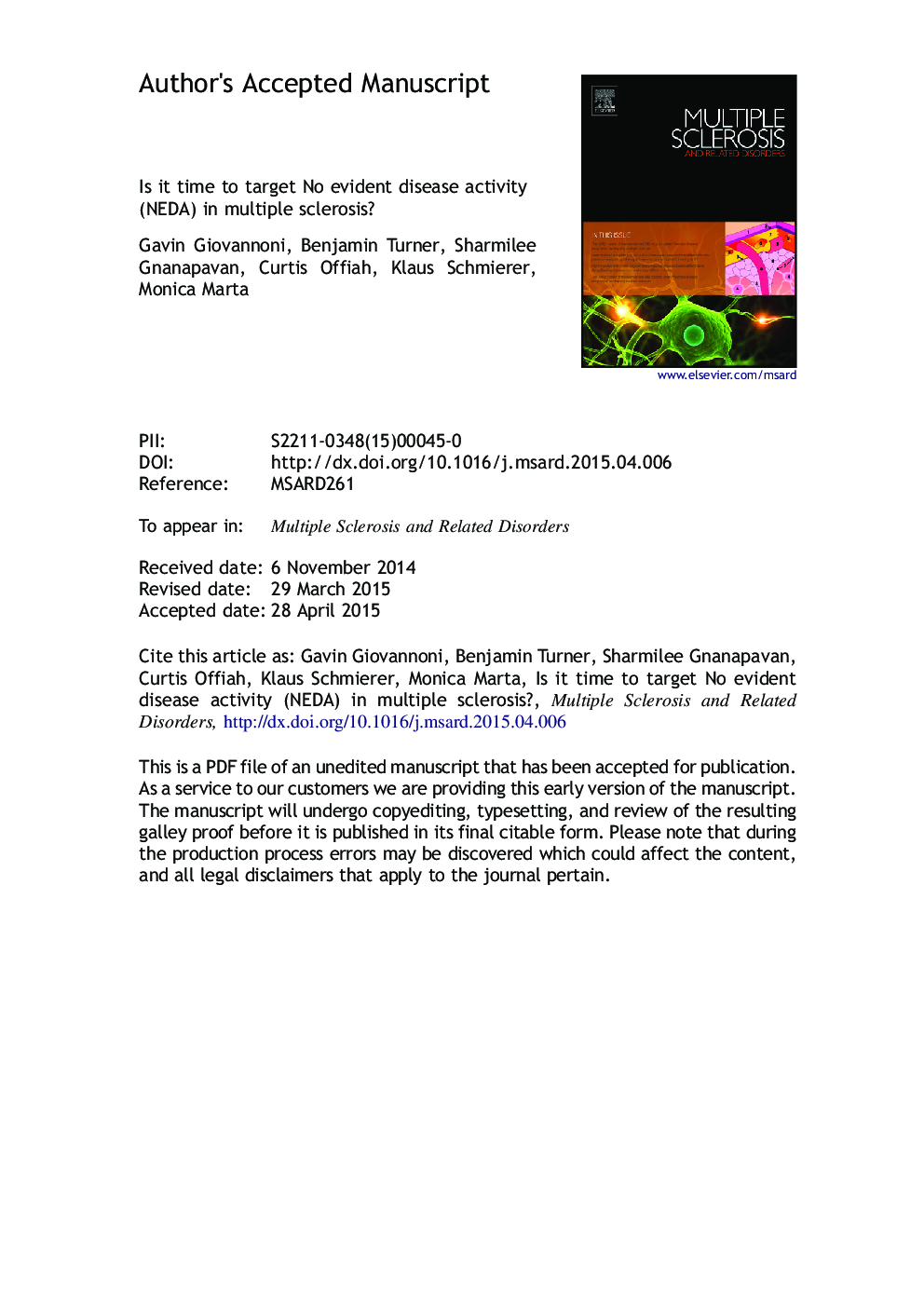| Article ID | Journal | Published Year | Pages | File Type |
|---|---|---|---|---|
| 5912796 | Multiple Sclerosis and Related Disorders | 2015 | 14 Pages |
Abstract
The management of multiple sclerosis is becoming increasingly complex with the emergence of new and more effective disease-modifying therapies (DMT). We propose a new treatment paradigm that individualises treatment based on a choice between two interchangeable therapeutic strategies of maintenance-escalation or induction therapy. We propose treating- to-target of no evident disease activity (NEDA) as defined using clinical and MRI criteria. This algorithm requires active monitoring with a rebaselining MRI, at a point in time after the specific DMT concerned has had sufficient time to work, and at least annual MRI studies to monitor for subclinical relapses. Disease activity on the maintenance-escalation therapy arm of the algorithm indicates a sub-optimal treatment response and should trigger a discussion about switching, or escalating, therapy or the consideration of switching to the induction therapy arm of the algorithm. In comparison, disease activity on an induction therapy arm would be an indication for retreatment or a switch to the maintenance-escalation therapy arm. We envisage the definition of NEDA evolving with time as new technological innovations are adopted into clinical practice, for example the normalisation of whole, or regional, brain atrophy rates and cerebrospinal fluid neurofilament levels
Related Topics
Life Sciences
Biochemistry, Genetics and Molecular Biology
Genetics
Authors
Gavin Giovannoni, Benjamin Turner, Sharmilee Gnanapavan, Curtis Offiah, Klaus Schmierer, Monica Marta,
